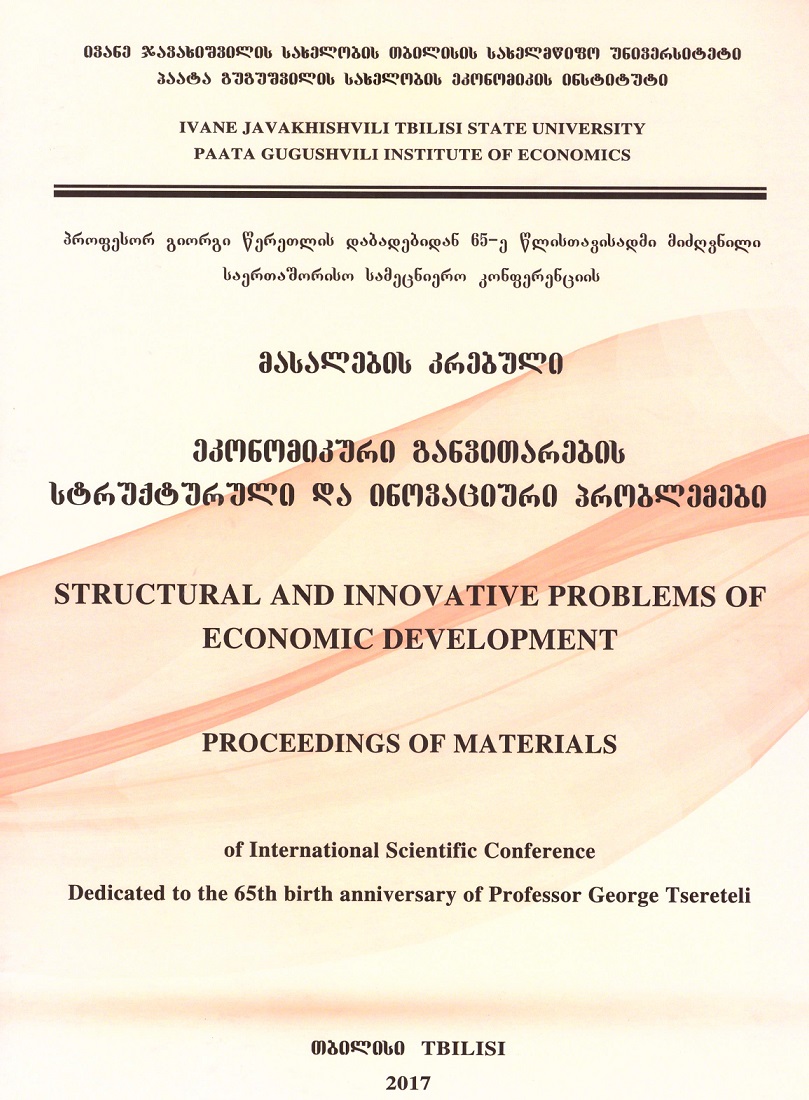
Ivane Javakhishvili Tbilisi State University
Paata Gugushvili Institute of Economics International Scientific

ANALYSIS OF FAMILY INCOME IN THE POST-PANDEMIC PERIOD
Abstract
Among the many functions of the family, the physical and cultural reproduction of generations stands out. But both these and other functions cannot be performed if the family does not have income, the family budget will not be able to meet the household needs. That is, family income plays an important role in its functioning.
The presented paper refers to the analysis of family incomes of one social group, which includes married and employed persons with higher education. The work is based on the results of sociological research. The survey was conducted directly with our participation in the summer of 2022.
The studied families include both nuclear and extended families. The majority was made up of extended families (58%). Both types of nuclear families are found among the studied: spouses without children (11%) and with children. Most of the employed respondents (59%) are employed in the public sector, and the rest in the private sector. 67% of families have two family members employed. And the number of families where one family member and three family members are employed is equal.
Salary is the source of income for the absolute number of families. According to the incomes, the families of the respondents should be divided into two parts, one, the number of families with no income other than salary and, second, families with other incomes added to the salary. Other sources of income are diverse, such as: rental of real estate (apartment, car) (15%); income from business (16%); remittances from abroad (12%); monetary assistance from relatives within the country (4%); Agricultural product in kind (2%); pension (2%); State monthly social assistance (4%). However, only three of them represent the majority: income from business, rental of real estate and remittances from abroad.
In the paper, a comparative analysis of family incomes of studies conducted in 2013 and 2022 is made. The interval between studies is nine years. The economic situation of our country at that time is significantly different from today, despite the fact that we went through a difficult period of the pandemic. This difference is also seen in family incomes. Both the average monthly income of the family and the median have increased. Over the past years, the average monthly income has increased twice or more. The number of families satisfied with their incomes has also increased and the number of dissatisfied ones has decreased. This new research shows that rising incomes increase demand in direct proportion. Therefore, when the question was about assessing the satisfaction of family incomes with a ten-point system, even those respondents who indicated that the family income is sufficient to meet their needs, made only eight-point evaluations.
The pandemic has affected household incomes. In most families (62.3%) family incomes have decreased due to the pandemic. This fact should be explained by the fact that 60.8% of families had other sources of income besides salary. For 42%, the source of additional income was business, real estate rental and remittances from abroad. All three of them were affected by the general quarantines caused by the waves caused by the pandemic.
37.7% of the respondents stated that the pandemic had no impact on their familys income. Some of the respondents were employed in the state sector. During the pandemic, the state sector was able to transfer employees to remote work mode and maintain salaries. It is probably thanks to this that the incomes of some families were not affected by the pandemic.
Key words: family income, sources of income, needs.
